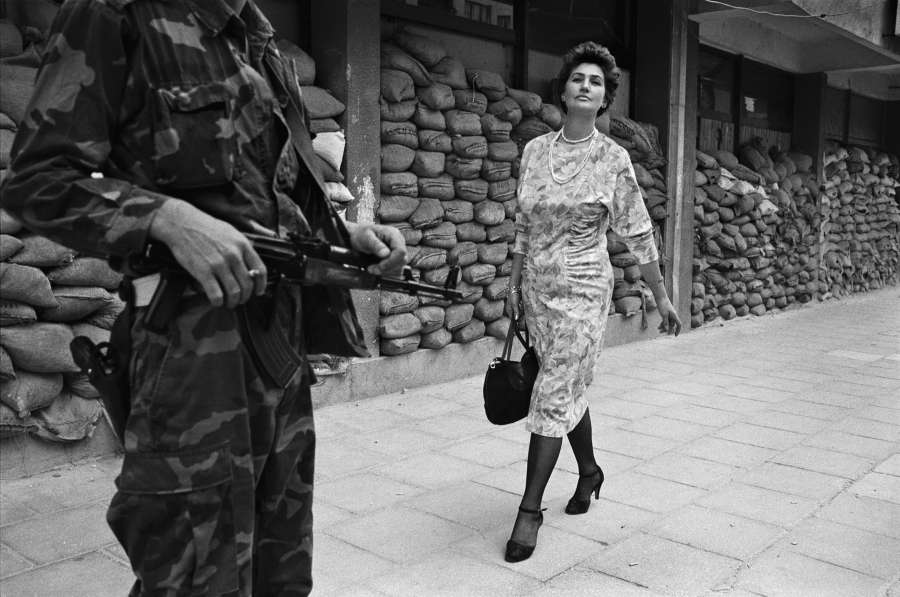As regular readers may already be aware, this year marks the 50th anniversary of esteemed photojournalist Tom Stoddart’s entry into an industry on which he has left an indelible mark.
We last saw Tom at the AP Awards in February, where he received a standing ovation while he picked up the Exceptional Achievement in Photography award. At the time, Covid-19 was pretty much an abstract threat in the UK. We had little idea how many things would change and how vastly. We’d spoken about the book he’d been working on, and over the past few months I’ve found myself hoping it wouldn’t be another casualty of an industry all but decimated by the virus.
Luckily, Tom’s been ploughing on and the launch date is almost upon us. In my mind, the book has been in the works for a year or so, but Tom would argue that it’s been in the making for the best part of the past half-century. Speaking to him remotely – as pretty much all interviews are conducted these days – from his home in the North East, he tells me, ‘I wanted to do something to mark the occasion, and someone at Iconic Images – Robin Morgan – said, “you’ve photographed an awful lot of women over your assignments – this is a great time to promote women in society” and that got me thinking and looking through my archive.
‘I’ve always been a passionate believer that when the chips are down, when things are really tough, that it’s the women and girls in families that put their shoulders to the wheel, show courage and get things done. When I started to look through my work, it became obvious that I had an awful lot of images that speak to that.
‘Then I got the chance of a book with ACC Art – Iconic Images are part of the collaboration. I wanted to make a high-quality book that is a tribute and a homage to women, not just in conflict, but in extreme circumstances.’
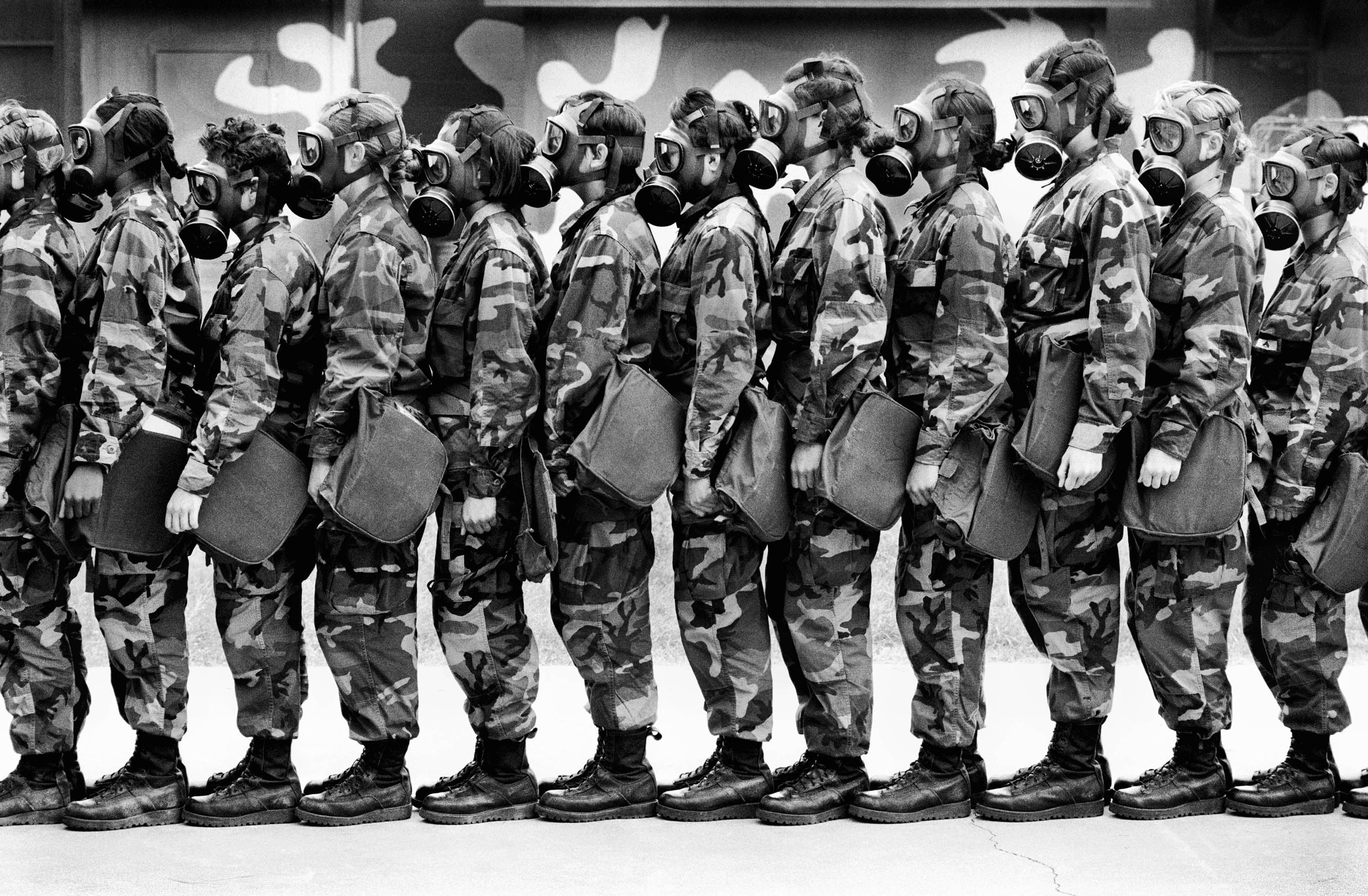
Every year, thousands of women join the ranks of the United States Marine Corp, the US military elite
Hard choices
Dozens of photography books are released every year, and whenever I speak to the photographers and editors behind them, it’s plainly obvious that the vast majority of them are a real labour of love. The hardest part for those with careers spanning the decades is often narrowing down a choice of imagery from an extensive archive. ‘There were some photographs that instantly fitted the bill, and others that I had to think back in my memory and think why does this fit in,’ Tom says.
‘I didn’t want to just do, you know, here’s pictures of women that I’ve photographed over the years. A lot of the pictures have memories and stories behind them. It was a case of going through everything, editing it down, and editing it down again. ‘I worked with a very good designer, Stephen Reid, the designer at Iconic Images and formerly of The Sunday Times. I don’t do many books, I don’t churn them out, so I want it to be as good as possible. Each picture is an image that means something to me, and hopefully to the people who view them. Photographers make rubbish editors, mostly, because you always want all of your work in and to display it huge. That’s why having a really sympathetic designer with a great eye is really crucial.
‘It was fascinating to go back through [the archive]. Most of my negatives are in my garage in filing cabinets. The vast majority of the pictures in this book are shot on film, so to pick up a contact sheet and to go to each picture again, it was slightly bizarre, and slightly humbling in a way. There’s a lot of pictures that I’d forgotten about that jumped off the contact sheet. Even if they didn’t end up in the book, they certainly brought back very strong memories.’
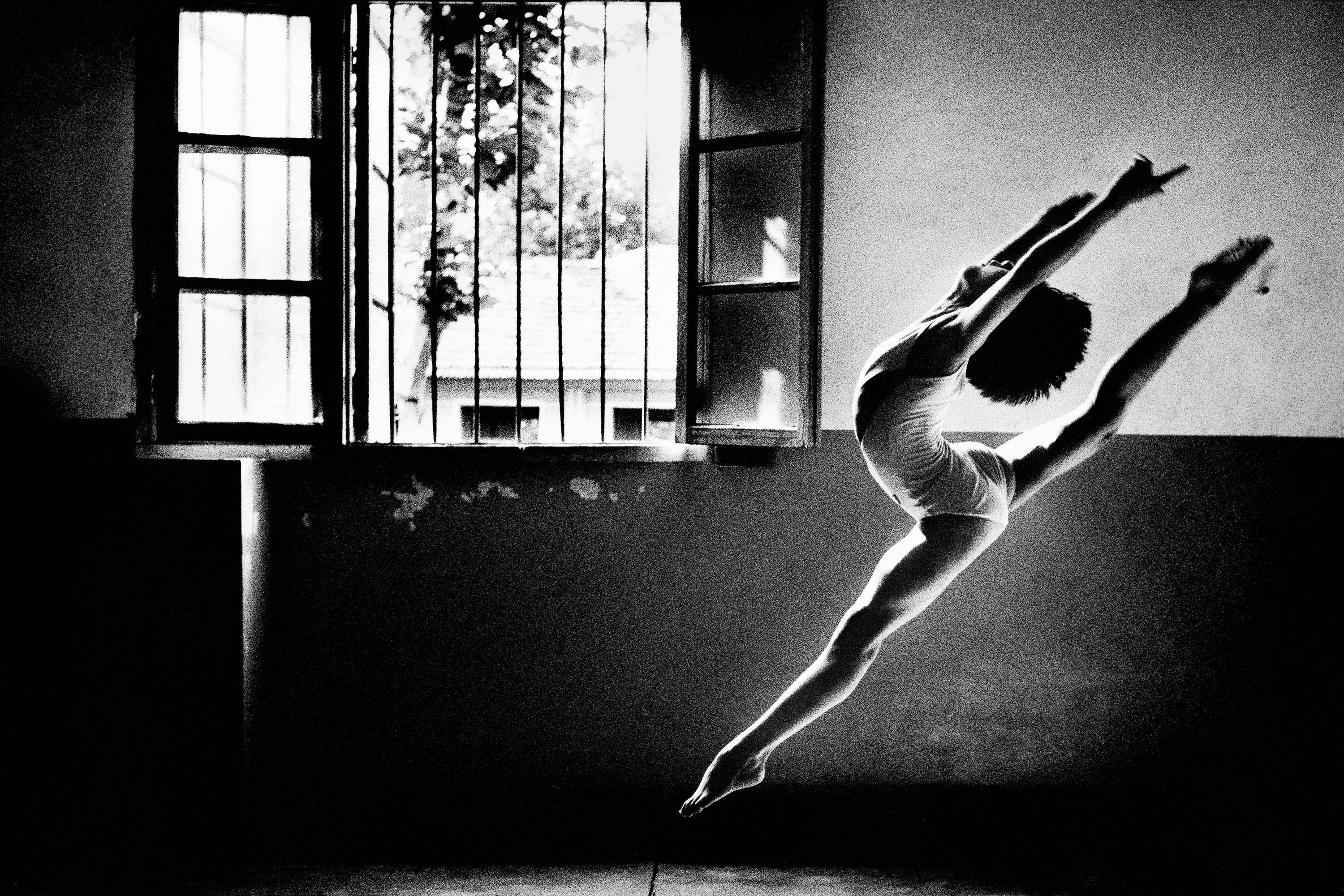
A young gymnast practises leaps at Wuhan School of Sport. Harsh training often guarantees sporting success for China
A career in sections
Extraordinary Women is split into different sections, each of which is indicative of the type of career that Tom has had: conflict, crisis, health, movement, courage, work and moments. ‘It’s about the viewer, or the reader,’ Tom explains. ‘It makes it slightly easier to identify visual elements, or the situations where various photographs were shot. ‘With the conflict pictures, I concentrated mainly on Sarajevo because I spent four years there during the siege. The place means an awful lot to me, and so do the people. With relation to women, if we take Sarajevo as an example, many women died in the siege because they were the ones who were out on the streets looking for food and collecting water from the pipes. So, when the mortars fell, they were outdoors. ‘Bosnian woman are very proud of their appearance. One of my favourite pictures in the series is the photograph of the women sheltering behind an APC (armoured personnel carrier) and they look immaculate, so well turned out – you would hardly know there was very little water in the city, or any electricity. Those are the small things that I wanted to show in how they conducted themselves during what was a terrible time.’
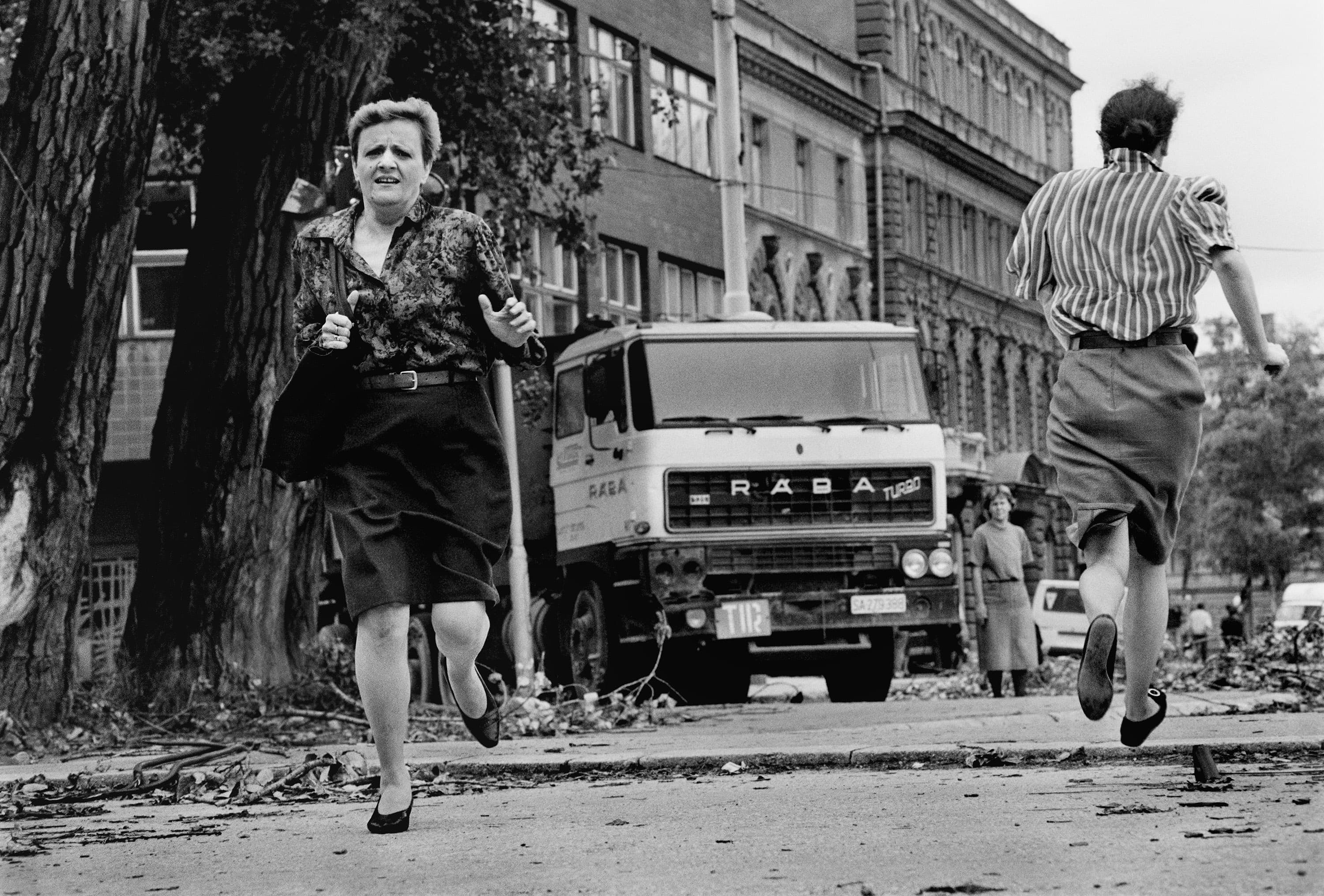
Women run for their lives across ‘Sniper Alley’ during the siege of Sarajevo
Putting together a book with a cohesive structure and which does justice not just to your own archive, but the subjects of your photography is always a testing time. ‘There are always challenges,’ explains Tom. ‘I wouldn’t say problems because the publisher was very accommodating. Of course, you want the best paper, the best printer, the best of everything. Books are a compromise – you do the best you can with the resources you have. It helps enormously if you’ve got a publisher who wants to try and make it happen and understands that you’re trying to make something of quality that will last a long time.’
Throw Covid into the mix, and you’ve got a whole separate set of challenges too, naturally. ‘It means not being able to get together – except virtually – with the designer, the publisher and Robin Morgan who edited the book. It also meant not being able to go on press [be at the printing press when proofs arrive] – all the things you would naturally do in normal times, so there was a lot of trust involved. I’m also not sure what the appetite for photography books is at the moment – but I’ve done my best and I’ve had a lot of good advice and input from everybody. ‘Any photographer will tell you that doing a book is a really stressful time, because you want it to be the very best it can be. But it’s also a wonderful time because you’re reacquainted with your work in such an intimate way, plus instead of having three or four pages to tell a story, you have 200. It’s a real privilege to put a book together.’

Tom’s image of Meliha is probably Tom’s best-known photograph
Confidence despite the snipers
The book hangs on the image of Meliha (above) the confident woman striding along the dangerous Sarajevo suburb of Dobrinja. The striking image adorns the cover of the book, the obvious choice to do so. ‘It means a lot to me,’ says Tom. ‘It’s just one of those moments that I feel lucky that I was able to get. I think it transcends just the siege in Sarajevo, which is why people like it. She’s very beautiful and very proud, and this image kind of epitomises what I was trying to say about women. It’s not just about women in extreme circumstances, it’s a homage to women generally.’
One of those women is the Hollywood actress and Tom’s friend, Angelina Jolie, who was has written the foreword to the book. ‘She knows the image of Maliha very well – I know she loves it because when she was making her movie in Bosnia, the cast and crew gave her this picture when the film was wrapped. It was after that that I did some work for her. I’ve photographed some of her foundation projects in Asia. I’m pleased that she wanted to write something in the book because again, she is an extraordinary woman. People see her as an actor and a director, but I’ve seen her, first hand, working in refugee camps and spending a lot of hours with women and children talking about their situation. I have a lot of time for people like that. She could easily sit in Hollywood and not do anything – like a lot of them do – but she’s trying to make the world a better place. I think we should all do that – we need to equalise everything, respect each other and share our mutual understanding and love. ‘Photography can be quite cruel, but I’d like to think that my pictures have a human side to them – I’ve always tried to shoot in a very humane way so that I feel justified. I feel good about putting these photographs into a book.’
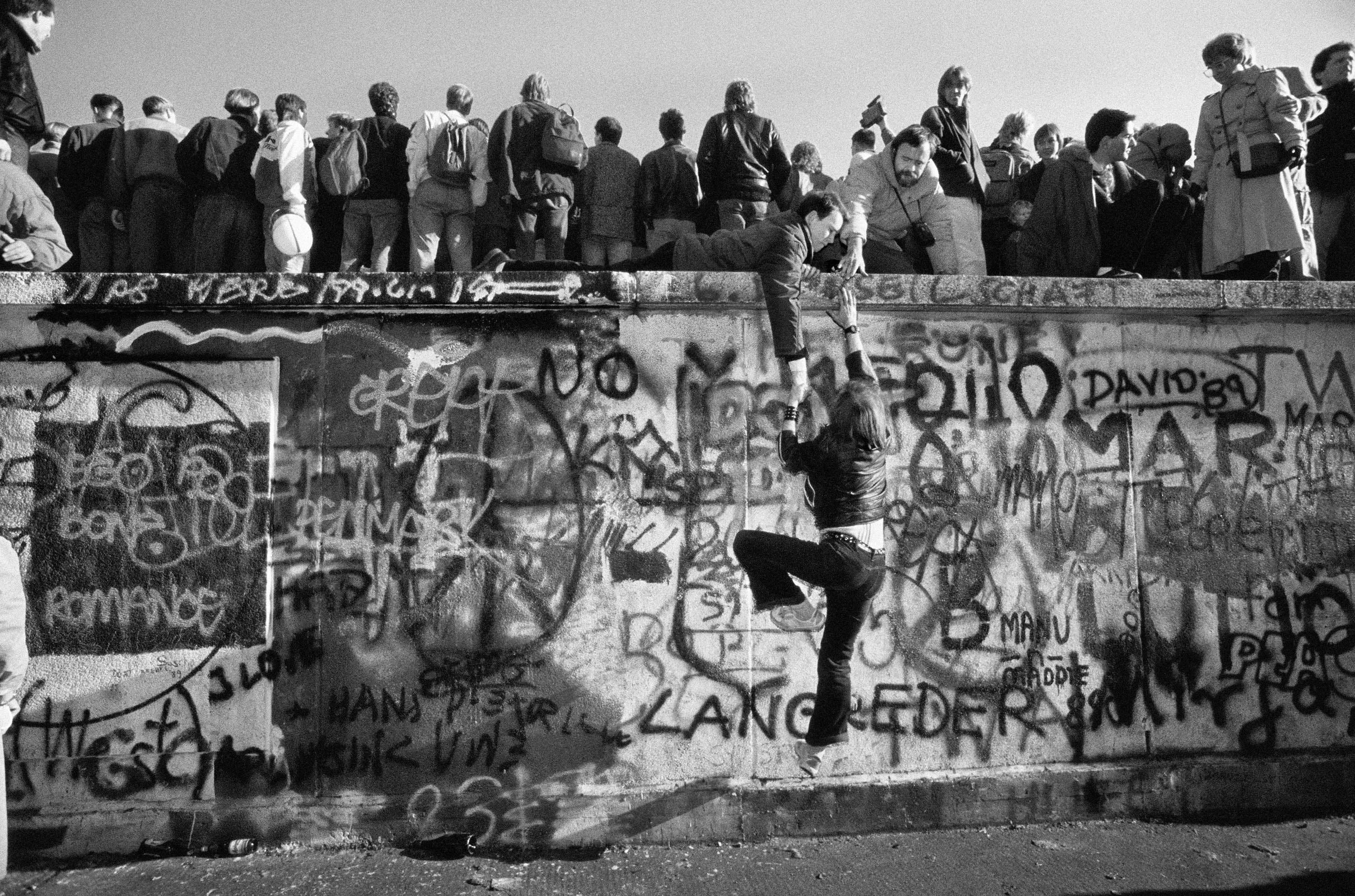
Crowds gather on top of the Berlin Wall near Check Point Charlie when East Berliners were allowed to cross into the west for the first time
Also included in the book is a 1987 news report by Marie Colvin – the foreign correspondent for The Sunday Times who died while covering the siege of Homs in Syria. Tom worked with her in Beirut, which was one of Marie’s first experiences of conflict. ‘I was older than she was, and I was more experienced. We took a chance in Beirut to get a set of pictures that alerted the world to something terrible that was going on in this refugee camp. It was with this story that Marie discovered that this is what she wanted to do – the story made a real difference. The resultant kind of world-exclusive stopped something terrible that was going on. I wanted to pay tribute to Marie, because in the end she gave her life for her reporting. That’s why I wanted to use her words, from her original article from The Sunday Times – The War on Women.’
Sister act
The last time Tom and I spoke about his upcoming book, he was hoping to make some new portraits of extraordinary women making a difference right now. Names such as Malala Yousafzai – the Pakistani activist for female education and the youngest ever Nobel Prize laureate sprang to mind. Covid has of course put paid to such ambitions, but in a strange way, there is a new portrait in the book as a direct result of it. At the very end of the book is a portrait – a composite due to social distancing rules – of Tom’s sister and his nieces. The extraordinary women in his own family have spent a combined 73 years working for the NHS. ‘It seemed right to me that apart from having queens, heroines and people like that, that right there in front of me, there were members of my own family that deserved to be honoured.’
As well as the upcoming book release, there’s also an exhibition scheduled for the Side Gallery in Newcastle, Tom’s home town. In these socially distanced times, supporting galleries – especially the independents who are undeniably in peril – has never been more important. ‘Having an exhibition at The Side is a great privilege for me because I live in the North East, so I’m really a big fan of what they do and the exhibitions they’ve had there. It’s a real honour to be on the walls of my home town in such a highly regarded and prestigious gallery space.’
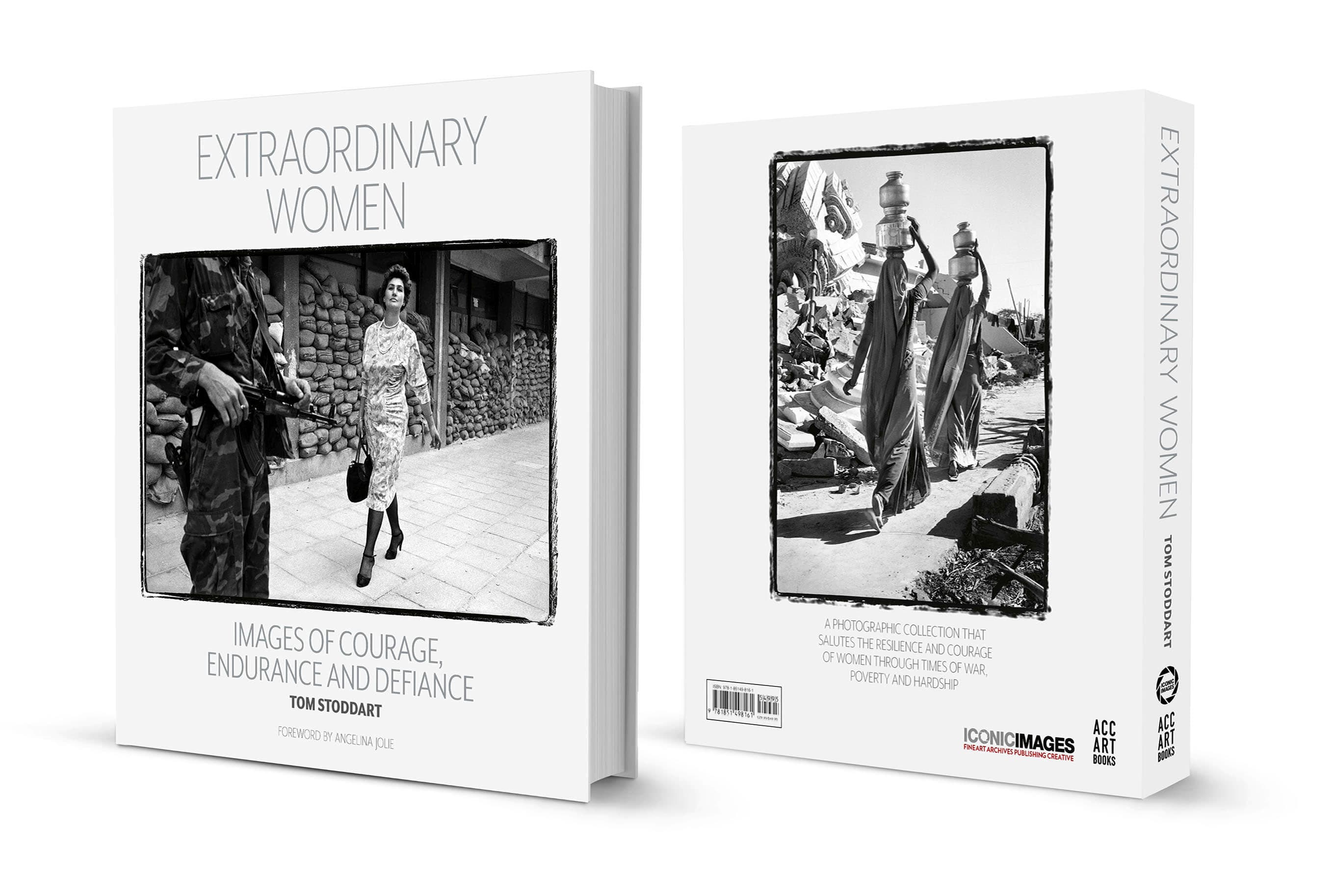
Extraordinary Women is available from all good bookstores from 1 October, or directly from the publisher (ACC Art Books). Images from the book will be exhibited at Side Gallery, Newcastle, from Saturday 26 September until Sunday 13 December. Please check the Side Gallery website for more details and opening times.

